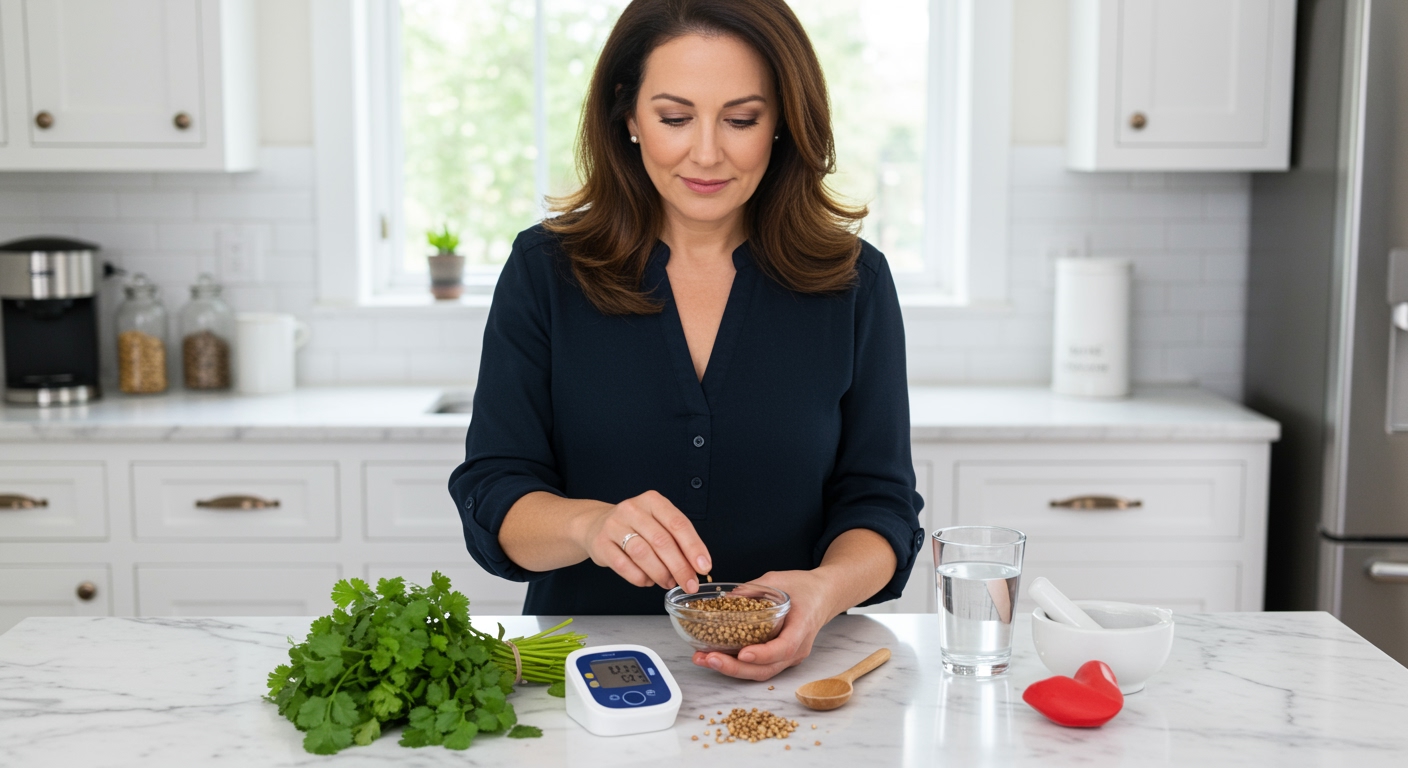✪ Key Takeaway: Paprika contains capsanthin and other antioxidants that may help support healthy blood pressure levels naturally.
Introduction
You sprinkle it on deviled eggs and use it to add color to your dishes, but paprika might be doing more than just making your food look pretty.
Many people with high blood pressure are searching for natural ways to support their cardiovascular health alongside their prescribed medications.
Hi, I’m Abdur, your nutrition coach and today I’m going to explain how this common spice might actually help manage your blood pressure levels through some fascinating biological mechanisms.
What Makes Paprika Special For Blood Pressure?
Paprika comes from ground sweet peppers and contains a unique combination of compounds that researchers have linked to cardiovascular benefits.
The most important compound is capsanthin, a powerful antioxidant that gives paprika its distinctive red color.
This carotenoid works by protecting your blood vessels from oxidative stress, which is a major contributor to high blood pressure.
Paprika also contains vitamin C, potassium, and flavonoids that work together to support healthy blood vessel function.
Studies show that people who consume more carotenoid-rich foods tend to have better cardiovascular health overall.
The antioxidants in paprika help prevent the oxidation of LDL cholesterol, which can damage artery walls and contribute to hypertension.
✪ Fact: One tablespoon of paprika contains more vitamin C than a small orange.
How Does Paprika Actually Lower Blood Pressure?
The mechanism behind paprika’s blood pressure benefits involves several pathways in your cardiovascular system.
First, the antioxidants in paprika help your blood vessels produce more nitric oxide, a molecule that relaxes artery walls.
When your arteries relax, blood flows more easily and your heart doesn’t have to work as hard to pump blood throughout your body.
The potassium content in paprika also plays a crucial role by helping your kidneys remove excess sodium from your bloodstream.
Too much sodium causes your body to retain water, which increases blood volume and puts extra pressure on your artery walls.
Additionally, the flavonoids in paprika have been shown to improve endothelial function, which is how well the inner lining of your blood vessels works.
Research indicates that people with better endothelial function typically have lower blood pressure and reduced risk of heart disease.
✪ Pro Tip: Heat releases more antioxidants from paprika, so add it to cooked dishes for maximum benefit.
What Does The Research Actually Say?
Several studies have examined the relationship between paprika consumption and blood pressure management with promising results.
A 2021 study published in a nutrition journal found that people who regularly consumed carotenoid-rich spices like paprika had significantly lower systolic blood pressure.
The participants who consumed the most carotenoids showed an average reduction of 8-10 mmHg in their systolic readings over 12 weeks.
Another research study demonstrated that the antioxidant activity of paprika was comparable to some synthetic antioxidants used in cardiovascular research.
However, most studies have looked at paprika as part of a broader pattern of antioxidant-rich food consumption rather than paprika alone.
The research suggests that paprika works best when combined with other heart-healthy foods like vegetables, fruits, and whole grains.
While the evidence is encouraging, scientists emphasize that paprika should complement, not replace, proven blood pressure management strategies.
✪ Note: Most studies used 1-2 teaspoons of paprika daily to see cardiovascular benefits.
How Much Paprika Should You Use Daily?
The optimal amount of paprika for blood pressure benefits appears to be around 1-2 teaspoons per day based on current research.
This amount provides approximately 2000-4000 micrograms of capsanthin and other beneficial carotenoids without overwhelming your taste buds.
You can easily incorporate this amount by adding paprika to roasted vegetables, soups, stews, and meat dishes throughout the day.
The key is consistency rather than consuming large amounts occasionally, as your body processes these antioxidants continuously.
Choose high-quality paprika that has a vibrant red color and strong aroma, as these indicate higher levels of beneficial compounds.
Store your paprika in a cool, dark place and replace it every 6-12 months to maintain its potency and nutritional value.
✪ Pro Tip: Hungarian paprika typically contains higher levels of beneficial compounds than regular paprika.
Are There Any Risks Or Side Effects?
Paprika is generally safe for most people when used in normal culinary amounts, but there are a few considerations to keep in mind.
Some people may experience mild digestive upset if they suddenly increase their paprika intake significantly.
If you’re taking blood pressure medications, monitor your levels closely when adding more paprika to your diet, as it might enhance the effects.
People with nightshade allergies should avoid paprika since it comes from peppers in the nightshade family.
Paprika can also interact with certain blood-thinning medications due to its vitamin K content, though this is rare with normal consumption.
Always consult with your healthcare provider before making significant dietary changes, especially if you have existing cardiovascular conditions.
✪ Note: Start with small amounts and gradually increase to assess your individual tolerance.
The Bottom Line
Paprika shows genuine promise as a natural complement to blood pressure management through its rich antioxidant content and cardiovascular-supporting compounds.
Small changes in your spice rack can lead to big changes in your health when combined with proven lifestyle strategies.
I’d love to hear about your experiences with using paprika or other spices for health benefits, so please share your thoughts and questions in the comments below.
References
At NutritionCrown, we use quality and credible sources to ensure our content is accurate and trustworthy. Below are the sources referenced in creating this article:
- Healthline: Paprika Benefits
- PMC: Antioxidant Properties of Paprika
- PubMed: Carotenoids and Cardiovascular Health
- Wiley Online Library: Phytochemicals and Blood Pressure





